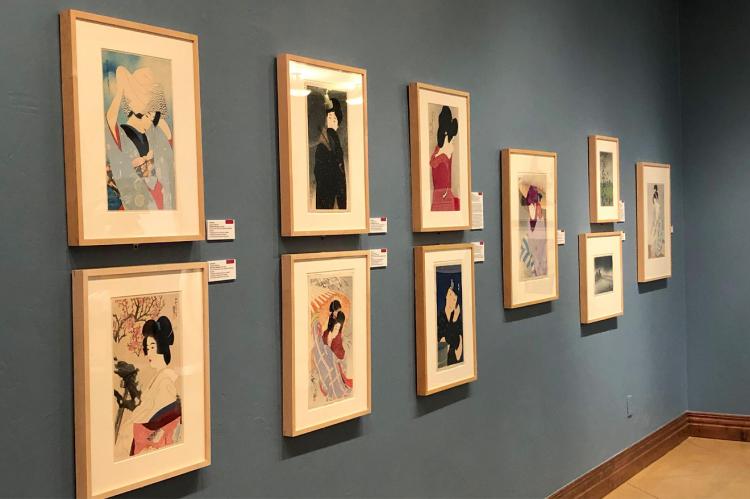"Seven Masters: 20th-Century Japanese Woodblock Prints" now at Citadelle
The Citadelle Art Foundation and Museum is pleased to announce the opening of Seven Masters: 20th-Century Japanese Woodblock Prints, an exhibition showcasing a new art form called “shin hanga,” developed by a small group of artists in response to Japan’s rapid Westernization and industrialization.
Shin hanga mingles the old with the new, creating beautiful, enticing pictures that are widely reproduced as prints of almost unsurpassed quality. Seven Masters will be on view at The Iris and Oofie Abraham Gallery through April 2022.
As the once-isolated nation of Japan entered the 20th century and began to assimilate a new, Westernized culture, demand for certain traditional handicrafts fell off significantly—among them, the iconic woodblock prints known in the West as “ukiyo-e.” Publishers and artists slowed production and created fewer new designs.
Yet what seemed at first to be the death knell of a unique art form without parallel in the world, turned out to be the dawning of another, as the path was cleared for a new kind of print: shin hanga.?
The exhibition Seven Masters: 20th-Century Japanese Woodblock Prints focuses on seven artists who played a significant role in the development of the new print, and whose works boldly exemplify this new movement. Drawing from the superb collection at the Minneapolis Institute of Art, the exhibition features the spectacular beauty portraits of the artists Hashiguchi Goya (1880–1921), Ito Shinsui (1898–1972), Yamakawa Shuho (1898–1944), and Torii Kotondo (1900–1976); striking images of kabuki actors by Yamamura Toyonari (Koka; 1886–1942) and Natori Shunsen (1886–1960); as well as the evocative landscapes of Kawase Hasui (1883–1957).
These multitalented artists were all successful painters as well, but this exhibition looks exclusively at their unrivaled work in print design, and includes a cache of pencil drawings and rare printing proofs to offer insight into the exacting process of woodblock printing.
Shin hanga, or “new prints,” resurrected the highest production values of the distant past, such as the use of thick mulberry paper and rich mineral pigments; special features like embossing and mica backgrounds; and an emphasis on the swirly movement of the rubbing tool, or baren. Traditionally, each ukiyoe had been printed by the hundreds—even thousands for the most popular designs—but shin hanga were produced in limited editions to guarantee exclusivity.
This exhibit was organized by the Minneapolis Institute of Art and toured by International Art and Artist in Washington, D.C., a nonprofit service organization dedicated to increasing cross-cultural understanding and exposure to the arts.
CREATING A WOODBLOCK PRINT
The making of Japanese woodblock prints has changed little over the centuries. Most prints are not a work of a single, autonomous artist. Rather, they are the product of collaboration between the publisher (often the seller), designer, carver, and printer.
The print designer first makes a rough graphite sketch on thin paper. Next, a more refined drawing is prepared, and is precisely traced onto translucent paper, producing the final drawing or “hanshita-e” that will guide the block carver.
The carver flips the hanshita-e over and glues it to a block of cherry wood. Where the drawing is white, the wood is carved away, leaving the dark outlines raised. This is the key block. A few impressions are made from it in black ink and given to the artist for color specifications.
Some artists, instead of giving written instructions, paint the key block with watercolors to resemble the final print, as a guide to the carver and printer.
With color instructions in hand, the carver makes key blocks for each color. Like the hanshita-e, these are glued onto woodblocks, and a separate carving is made for each color.
All of the wood blocks, along with color instructions, are delivered to the printer, who prints on thick, moistened mulberry paper, applying pressure with a barren, or rubbing tool. Generally, the key block is printed first, and then each color individually.
The printer may be asked for various special frets. Embossing is done by pressing the paper firmly, with the elbow, onto an un-inked block. Gradation is achieved by moistening a block, applying color and glue with a brush, and then printing in the usual way. A mica background is created by printing a layer of dissolved glue onto freshly printed background color and sprinkling mica powder over the glue.


